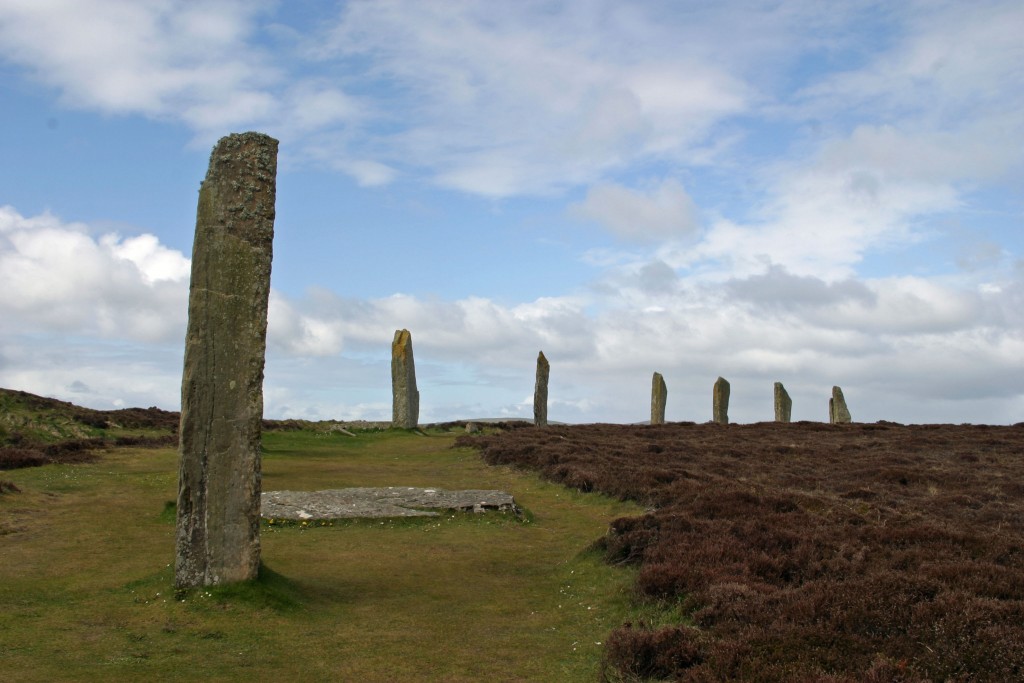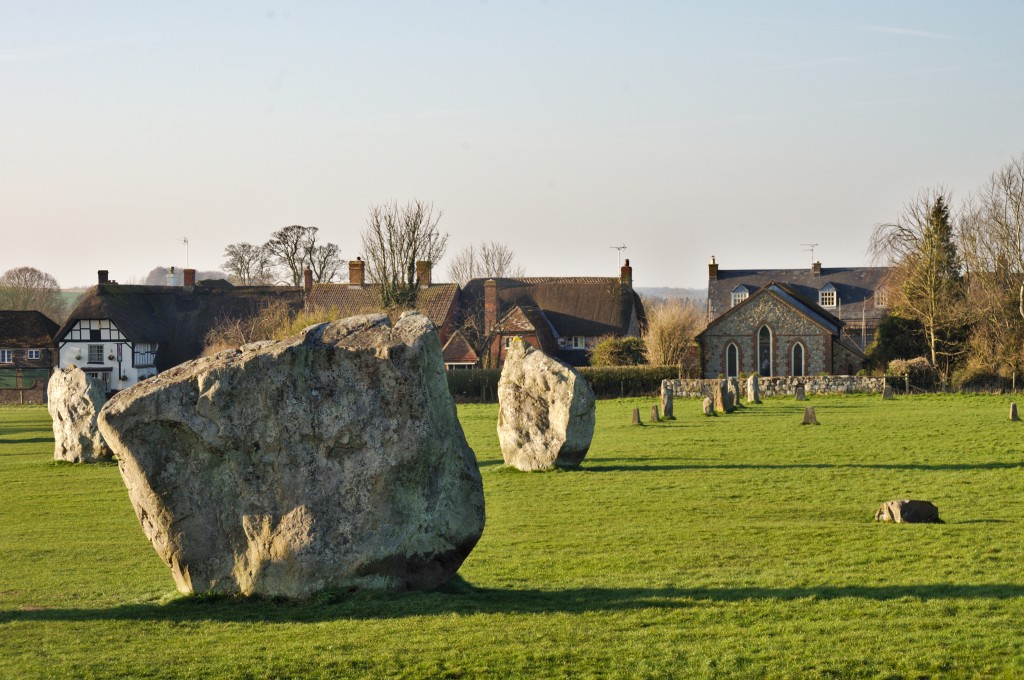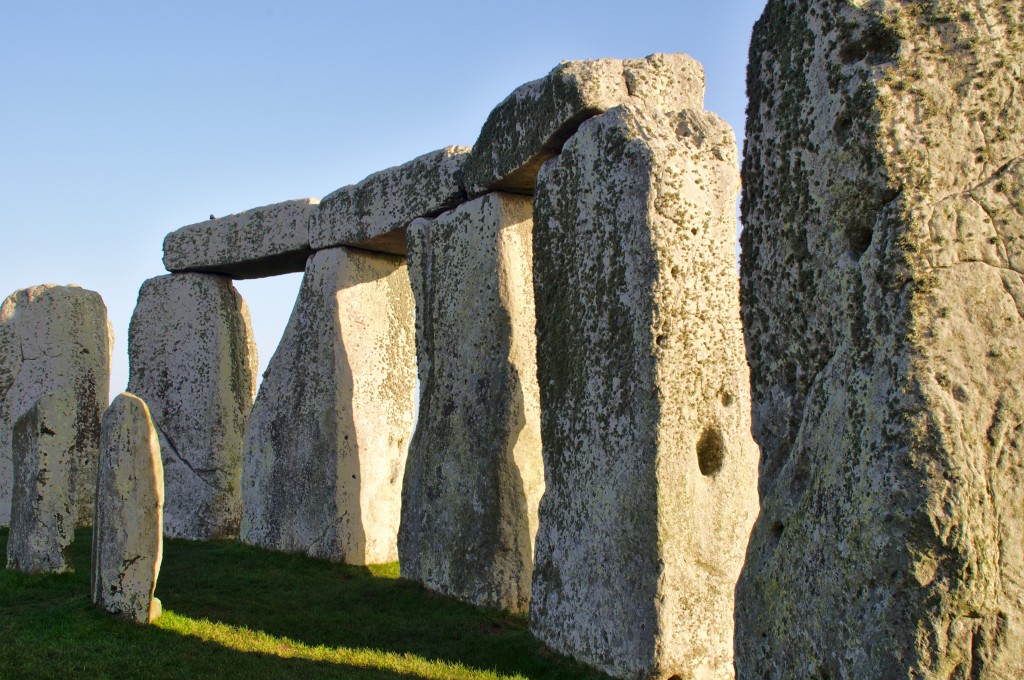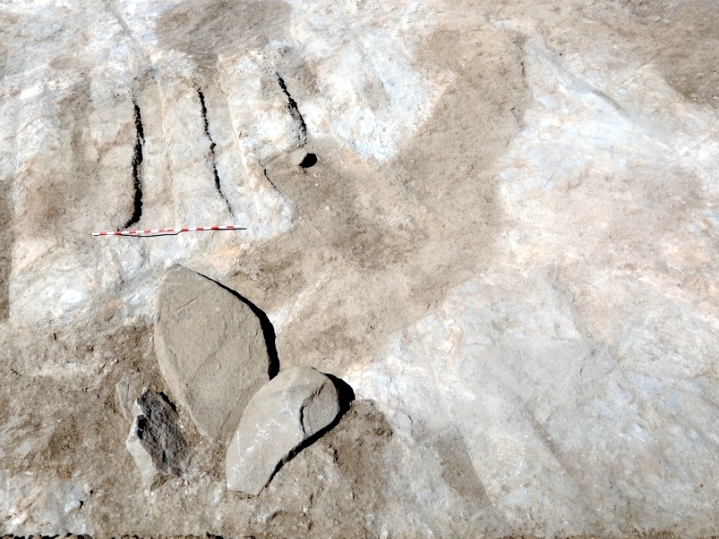Standing stones and other megalithic structures

Monumental standing stones (megaliths) are a common feature of Neolithic landscapes in Europe. They are normally isolated (menhirs, stelae), forming circles by themselves or as part of megalithic structures such as portal tombs. But sometimes they are found at ditched enclosures as well, alongside other components such as ditches, banks or timber structures. Certain British henges show a significant number of monumental standing stones, often forming enclosed spaces to the interior of the ditches. That is the case of Stonehenge and Avebury in southern England, or the Ring of Brodgar in Orkney, Scotland.

However, in general terms, standing stones are rare at Neolithic ditched enclosures. In fact, outside of the British henge phenomenon there are very few ditched enclosures which comprise megaliths next to ditches and palisades or banks. And, at those henges containing stone circles, the megaliths tend to be late additions to pre-existing ditch and bank ensembles.

In spite of this, big standing stones are strongly associated with European Prehistoric ditched enclosures in most people’s minds, Stonehenge being the best example. This is due to the striking visual impact that megaliths produce: their size and vertical orientation, and the fact that they are placed above ground level, immediately make them more easily visible by visitors than, for example, ditches. Their stronger visibility also explains why sites with megaliths were discovered earlier by surveyors than the majority of stone-less ditched enclosures. Lastly, the amount of work hours invested in extracting, transporting and erecting the big stones is evident, and a source of awe and appreciation by the public at large.

Despite the scarcity of ditched enclosures with megaliths, advances in research methods and a deeper knowledge of the features of many sites could in the future result in the detection of more monumental standing stones at ditched enclosures. This has recently occurred, for instance, at Durrington Walls (Wiltshire, United Kingdom), and, to a lesser extent, at Perdigões (Portugal).

An example: Standing stones at Avebury

Avebury is one of the most important and famous henges in Britain, only second to Stonehenge. It consists of an enormous ditch, with an external bank and several internal areas delimited by big standing stones or megaliths, among other elements. Built during the late Neolithic, it sits within a very rich archaeological landscape, near Windmill Hill causewayed enclosure and not far from other enclosures such as Knap Hill, Rybury or Marden henge. It is open to the public as part of the UNESCO World Heritage site of ‘Stonehenge, Avebury and associated sites’.
Next: other elements